How You Can Transform Emotional Eating Into Pleasure-Based Living
We have all heard of “emotional eating”—a term often associated with pathology and shame. Unfortunately, this “dark secret” can cause a great deal of emotional harm. What most people don’t realize, however, is the reality that as human beings, WE ARE ALL EMOTIONAL EATERS!
Think about it, IF PAVLOV’S DOGS SALIVATED TO A LITTLE BELL…IMAGINE HOW MANY ASSOCIATIONS WE HAVE WITH FOOD during our lifetime!!! Associations can be related to times when we’ve felt loved, excited or happy, celebratory or sad, safe or scared, or any broad range of emotions. Associations with rewards, punishments and stress relief can also serve as strong motivators to eat for comfort. Whatever food was associated with those moments will become infused with sensations, as well as the emotions we have associated with those memories and experiences. Life touches us in many ways…and eating is one of the universal needs we all have —so is inevitably a relevant part of how we experience (and cope with) life.
WHAT IS “EMOTIONAL EATING”?
Emotional eating is any eating that is triggered by emotional needs or reactions, instead of by physiological needs for sustenance.
2 PRIMARY TYPES OF EMOTIONAL EATING
1) Cues to Eat (Direct Associations): Like Pavlov’s dogs who learned that the sound of a bell meant that food was to follow (causing them to salivate), cues from our environment can do the same for us. Advertisers and brand developers take full advantage of and capitalize on this fact. When we see “the golden arches” or the Starbuck’s logo or other such similar signage, our reactions and possible subsequent behaviour to purchase and eat food (when we are not really hungry) is totally natural. In a world full of such images, slogans, catchy songs and the like, it makes it very challenging to reduce our exposure to these cues.
2) Food to Meet Needs (Food as Medicine): Subtler, yet far more seductive, is the natural tendency to use food as emotional medicine. When not overused, food can meet many needs.
7 NEEDS FOOD COMMONLY MEETS
- SELF-SOOTHING/COMFORT: From the moment we are born, food was our first “soother”.
- STIMULATION/AROUSAL: Certain foods stimulate the body, such as:
- Caffeine
- Chocolate
- Spicy Food
- Sugar (some have likened sugar to “legal crack” because of how it impacts the neurological system)
- FUN: Eating can be a fun activity in and of itself.
- DISTRACTION or “NUMBS” us when we are Anxious or Distressed/REDUCES EMOTIONAL DISCOMFORT: When we are experiencing unpleasant emotions or arousal, eating can offer a “distraction” from the emotional discomfort. Because eating also triggers the calming parasympathic response, the intensity of undesirable feelings can be numbed by eating.
- SENSUAL PLEASURE: Because eating can involve all of the senses, it can offer significant sensual pleasure.
- AN EASY DATE IDEA OR OUTING WITH FRIENDS/LOVE & CONNECTION: Because it is such a wonderful universal activity to share, eating offers a simple avenue for connection.
- CREATIVE OUTLET/SELF-EXPRESSION: Culinary art is a viable art form and offers a vehicle for self-expression.
In other words, it’s natural to “use food as medicine”, for both emotional and physical healing. Emotional eating is not inherently problematic, but it is inherently human.
WHEN THERE A PROBLEM WITH EMOTIONAL EATING & WHAT YOU CAN DO ABOUT IT
Emotional eating poses an emotional and physical health hazard when food is over-used to meet the above needs. This happens when there are not enough other pleasures incorporated in one’s life. “Pleasure Insufficiency” is a major reason why food is often “abused” as a “drug of choice”. The great news is that the solution is quite simple: PLEASURE/“Responsible Hedonism”.
In my 29 years practicing as a therapist, I have discovered that pleasure has been underutilized as one of nature’s best anti-depressants. A huge topic unto itself, pleasure acts on a variety of cognitive, sensory, neurological and emotional levels that contribute to healing. By broadening your perspective about what non-food pleasures you have accessible to you (whether through physical activity, nature, meditation, reading, playing with children or pets, volunteering for a cause you believe in, or…any of countless possible sources of pleasure) and utilizing these more intentionally, your reliance on food as your primary source of pleasure reduces, hence reducing the amount of emotional eating you will find yourself doing.
Our relationship with food is very complex. It’s shaped by our experiences, our culture and traditions, and also our strategies for coping. Releasing judgemental attitudes about emotional eating and the associated shame alone has a freeing impact. However, by increasing our accurate understanding and our compassion of the true nature of what emotional eating really is can offer us a valuable gateway into a more joyful and healthy life.
Dr. Theresa Nicassio (“The Inclusive Chef”), Registered Psychologist, author, and gourmet raw food chef, is an integrative mind-body wellness expert who has been educating and empowering clients, students and the public since 1987. Her bestselling book, YUM: plant-based recipes for a gluten-free diet has won the 2015 GOURMAND World Cookbook Award as the Best Diet Book in Canada for the public in English and has now also been short-listed in GOURMAND’s 2016 Best In The World Competition. Theresa also contributes to public awareness through her blog yumfoodforliving.com, social media, magazine articles and other media outlets.


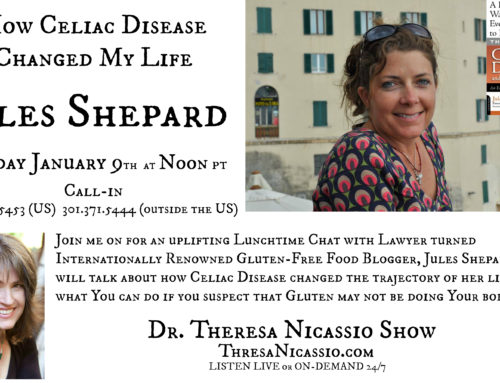
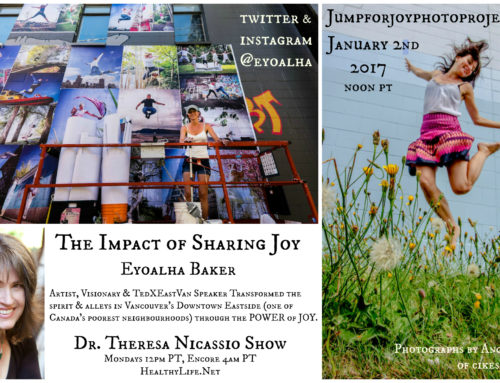

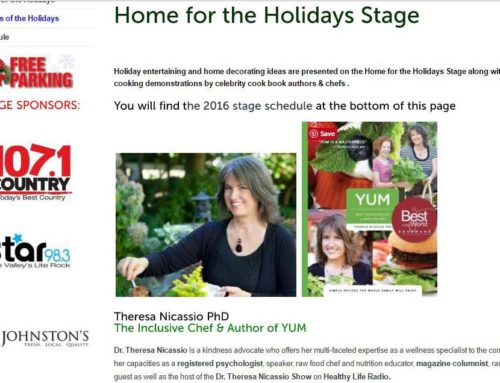



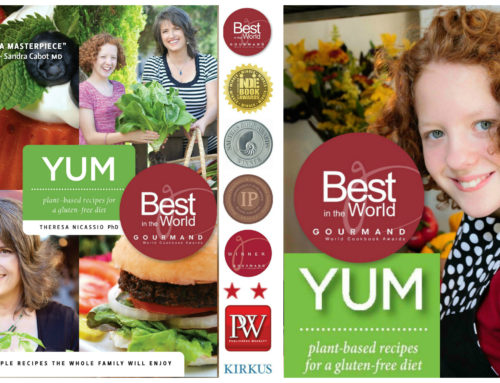
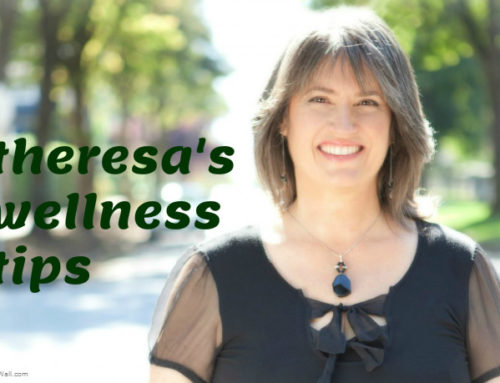



Connect With Us